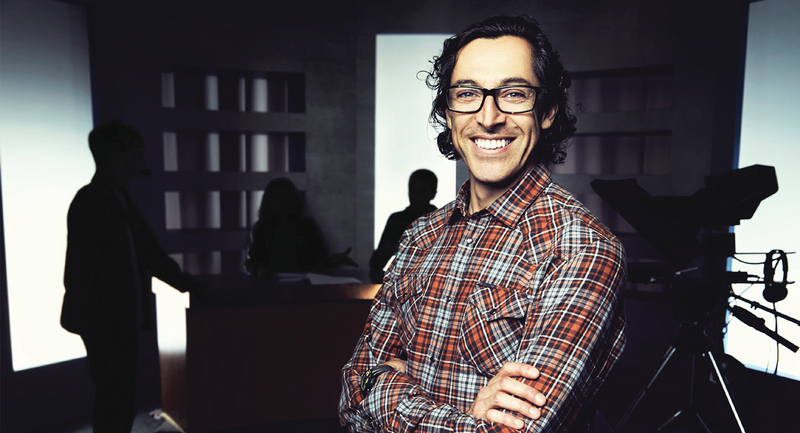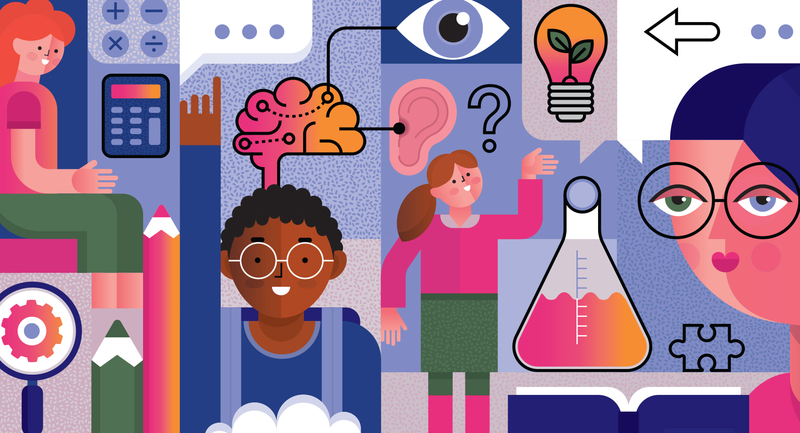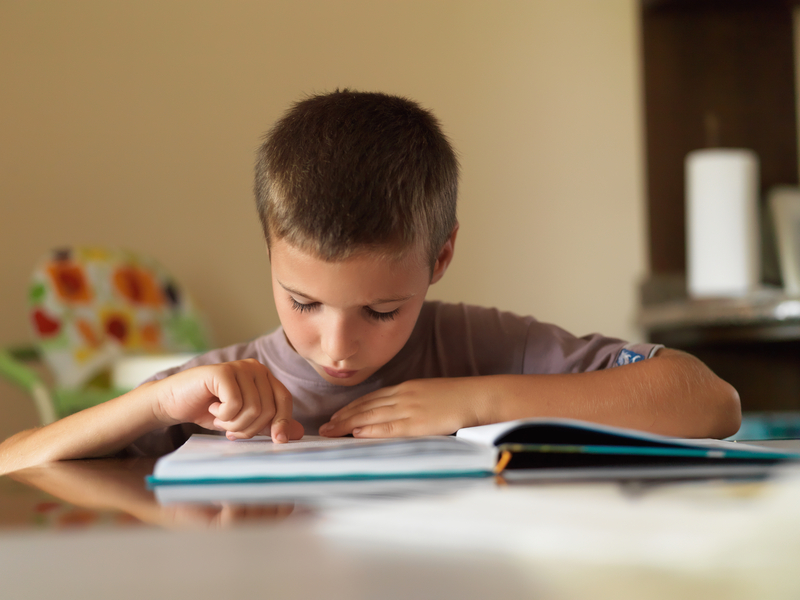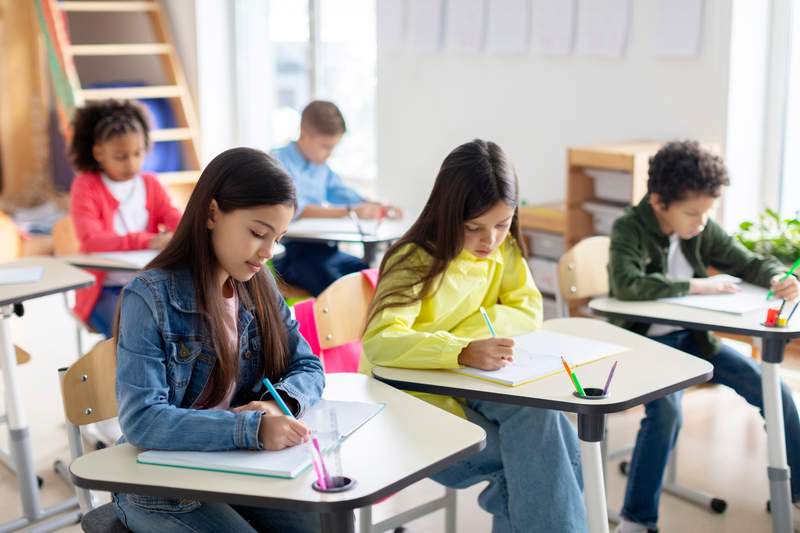For years, as I checked out in the grocery store, I saw Bat Boy on the pages of the Weekly World News. That "news" paper is no longer being printed, but weeklyworldnews.com exists. According to an article posted on the site in January 2017, Earth was going to collide with the planet Nibiru on October 17, 2017. So I suppose if we were indeed obliterated, you aren't reading this article. My point is that fake news is nothing new. Weekly World News started in 1979, the popular news satire organization The Onion was founded in 1988, and many other tabloids and websites had the similar idea of writing silly news stories for our amusement. No one thought this was real stuff. We all knew it was satire or farce. All of us, right? But how about a story claiming that Hillary Clinton sold weapons to ISIS? Is that fake news? Unlike the Bat Boy story, which is obviously (to most) silly, the Clinton story is part of a new generation of fake news with less benign motives than amusement.
It was the 2016 presidential election that brought this less benign type of fake news to everyone's attention. Some made-up stories were getting lots of attention, and some people were worried that the stories were being used to influence voters.
Since then, educators have responded to one of the alarms raised by fake news: the relatively easy problem of how to teach students to find the fakes. We have, however, largely ignored the more important and more difficult problem caused by fake news: how to limit skepticism of the media. For every person fooled by a fake story, there may be many more whose trust in the media in general is diminished. Discounting all news means discounting true news, too. And overwhelmingly, most news is true.
First, the Easy Part
Lots of resources, such as the News Literacy Project, help solve that first problem: teaching students how to identify fabrications. Let me add to the help provided by resources by sharing five ideas. 1. Teach a healthy level of skepticism.
The distance between news and "fake news" has shrunk. In the old days, the Detroit News landed on my doorstep. To find the Weekly World News, I had to travel to the supermarket, and I don't how far I would have had to go to get other fake news sources. Now that news is obtained mostly online, no travel is involved. Students are one click away from going down the rabbit hole of "news." They can instantly access an increasing number of websites putting out stories intended to deceive, to attack, and to influence, in addition to the ones putting out stories to entertain. "News" stories about spider eggs inside of Beanie Babies are mixed in with New York Times front page stories, and it's becoming less and less clear what the legitimate news stories are.
Teach students to be a little suspicious. Encourage students to resist the urge to uncritically accept click-bait headlines, but instead to read thoroughly and check the source. Just because a source has a great sounding name that includes the word "news," does not mean it is news. Weekly World News, after all, claims to be "The World's Only Reliable News."
2. Show students how to look for sources.
Legitimate articles will name sources. Ask students to list the sources in any article and to cite sources themselves when commenting in class. Instead of saying, "The Keystone Pipeline will wreck the environment," encourage students to say, "According to an article in the Huffington Post, the Keystone Pipeline will cause environmental damage." A class discussion now becomes a media literacy lesson as you talk about sources—"Why should I believe the Huffington Post?"—as well as a discussion about the pipeline.
3. Show students how to analyze sources.
I wrote my book Researching in a Digital World (2015) because too many teachers send students online without properly preparing them to think critically about what they find. Lessons in that book about how to evaluate websites should be used to look for fake news as well.
Here's an easy way to teach students to critically analyze news sources. Divide them into small groups and give each group an article to check. Give most of the groups fake news articles but sneak in a couple of legitimate articles, too. Ask students to look for the "About Us" or "Home" or "FAQ" tabs on news sites. KTLA is a real news channel in Los Angeles, but News4KTLA is bogus. The difference between the two is apparent from the "about us" tabs.
Another tip is to have students check the site's history and information pages. The New York Times and the Wall Street Journal will have extensive archives. Not so for lots of sites on Facebook with "news" in their name that were created in the last couple of years.
Next, ask students to analyze the sources within the article. Do the links work? Do the experts quoted exist? Do they have a particular bias? Can you find the sources? Is the treatment of anonymous sources explained?
Once they've finished their discussion, have each group report their findings to the class and declare the article to be true or not, using evidence from their research. Students will begin to make critical thinking about news items a habit.
4. Teach students to look for multiple sources.
About one million people engaged with an article that appeared on Facebook saying the Pope had endorsed Donald Trump. The article appeared on a site called Southend News Network. If you click on their "About SSN" page, you'll see that the site's creators admit it is bogus. But even if students never get that far, ask them to check for multiple sources reporting on the same story. Ask them: If the leader of one of the world's largest religions makes a political endorsement, do you really think only one online news site would cover it? Do you think that CBS, NBC, ABC, Fox, CNN, Reuters, the Guardian, and the Washington Post—all of them missed it?
Nope. It never happened.
5. Show how to use fake news detectors.
Snopes.com, Factcheck.org, Politifact.com, and others have as their express purpose to verify information. Can you be sure they are legit? Remember: multiple sources. You don't need to believe one of them. Check several. You can also find examples of fake news stories to use for demonstration purposes at Snopes. Now the Harder Part …
Much of what has been called news may be false, but I am more worried that what has been called false may be true. As I mentioned, finding fakes is easy. Once students are aware of the problem and are given simple tools for analyzing information, they can easily sniff out made-up stories. And the truth is, being duped is not generally dangerous. Is it possible that someone believes NBA refs were paid off? That someone might build an underground shelter to try to survive Earth's impending collision into another planet? Oh well. The real problem with fake news is problem two: not letting the hysteria about fake news lead to total distrust of media.
In an era where the term "fake news" gets shouted all the time, truth gets buried with all the falsehoods. The default becomes, "Ah, they are all lying. You can't believe anything." We must instead cultivate a healthy level of skepticism. It is not the case that there is no news, no truth, and only lies. Don't let students give up.
Here are three ways to avoid total distrust of the media.
1. Teach the difference between biased and fake.
With President Donald Trump using the term "Fake news!" in his tweets and at his rallies to dismiss stories and attack the media, I cannot avoid mentioning him in this discussion. Yet this brings up a problem for educators: In a highly charged, divided nation, any critique of the president will lead someone to say, "You're cramming your political views down the throats of your students!"
Yet I would argue that critically analyzing what politicians say is fundamental to democracy. Pointing out a factual error is not out of bounds. Noticing that language has been misused is not foisting a political view on anyone. And President Trump is misusing the word fake. Fake means made up, didn't happen, completely bogus. I believe the President should say that he thinks some news sources are biased, because he believes they lean one way and choose stories that cast him in a negative light. Mainstream media outlets such as the New York Times, NBC, ABC, CBS, and CNN—all of which the President has called "fake news" in tweets—are not making up stories in the same way that Weekly World News and News4KTLA are. They may report things the president doesn't like, they may fail to report things he wants reported, but they are not churning out "fake news." That doesn't mean they don't make mistakes, but making a mistake is not the same as inventing stories.
2. Know your personal biases.
In the book Good Thinking: Teaching Argument, Persuasion, and Reasoning (2016), I introduce a couple of reasoning errors that contribute to our susceptibility to fake news claims. The first is the availability bias. What we see is what we believe. Easily available information, repeated often, crowds out significant other information. If all we hear is "FAKE NEWS!," we come to believe that all news is fake. And indeed, Americans' trust and confidence in the mass media to "report the news fully, accurately, and fairly" has dropped to its lowest level in Gallup polling history, with 32 percent saying they have a great deal or fair amount of trust in the media ("Americans' Trust …", 2016).
Teach students to be wary of believing that all news is fake just because they hear the term a lot. There is much, much more real news than fake news out there.
The second error is the confirmation bias. You have opinions, and those opinions alter the way you view reality. Humans want to be right, and we tend to notice the things that "prove" what we already think. An example: My wife Anne has believed for a very long time that a no-fat diet is important. There are a lot of stories now suggesting that the research about low-fat diets was flawed and that the type of fat is more important than the amount of fat (Duane, 2014). As a cheeseburger lover, I share these stories in the hope that Anne will join me at In-N-Out Burger someday. She discounts the new articles because they don't confirm her deep-seated belief. But look at the reverse case! Am I attracted to these articles because I want to believe them? Anne and I are both influenced by confirmation bias.
Confirmation bias influences how the media is viewed. According to an Emerson College poll in 2017, 91 percent of Republicans think the news media is untruthful, while only 31 percent of Democrats do (Concha, 2017). Republicans and Democrats are both seeing what they want to see. Teach students to be very careful about making decisions about news stories based on what they want to believe.
3. Teach the importance of the press.
The news is a fundamental part of our democracy. The Founding Fathers thought that protecting the freedom of the press was so important they put it in the First Amendment. They realized that a free and respected press would help hold government leaders accountable, publicize important issues, and educate citizens so they can make informed decisions. Attacking the press, then, is a very dicey proposition. If the press is demeaned, those three things don't happen. Who will perform those functions?
I understand that it is a brilliant strategy for rulers to discredit all news sources. Demeaning the press has always been used by authoritarian leaders before they moved to limit all but approved sources of information. I grew up in the age of communist Russia. Pravda was the official news publication of the Communist Party and subscribing to it was mandatory for many organizations in the Soviet Union. Another Soviet newspaper was Izvestia, but it, too, was controlled by the government. The communists in China and the National Socialists in Germany also shut down all but approved news sources in their countries. Critique and investigation become outlawed.
Former President Richard Nixon would have loved the "fake news" gambit during the Watergate scandal. Dismissing the news as inauthentic would've been a great tactic for him. Instead, however, the then-respected press performed an important function, and the public's belief in the veracity of the press forced us to accept a truth we didn't want to see.
It can be illuminating for students to study the events of Watergate. Ask them: Is it possible for an elected leader to do something wrong? Is it possible that a president may want something hidden from the public? What role did the free press play in discovering the truth? Did we accept the unpalatable conclusions of the reporters because we respected the press? The Watergate example can show students how believing in the press can change history.
I wish none of this were necessary. I wish we lived in an age where complete disregard for the truth was not common. I wish "fake news" was a term never invented. But my wishes don't matter. Civic literacy demands teaching about fake news and critical thinking about media and helping students understand the important role the press plays in our democracy.







